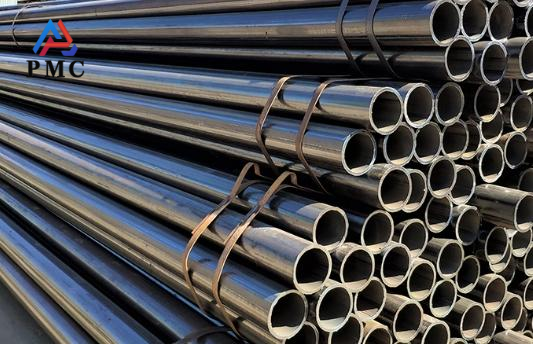
ERW Steel Pipe Specifications
Product Description:
2) Standard: API, ASME, B36.10M 1996, JIS, DIN, GB8162, GB8163, GB5310
3) Material: ASTM 5L, ASTM A53 ERW, ASTM A178, ASTM A500/501, ASTM A691, ASTM A252, ASTM A672, EN 10217
4) Size: Out Diameter:1/2"-24";Wall Thickness: 1.65-20mm; Length: 3m-12m
5) Surface treatment: Black rust-proof oil, transparent oil, hot galvanizing, 3PE, epoxy coating
6) Applications range: Petroleum, chemical, power, gas, metallurgy, shipbuilding, construction, etc
7) Packaging: Pipe cap, steel strips bundled

Characteristics of ERW pipe
1. Process characteristics: The high-frequency resistance welding (ERW) process is adopted. The edge of the steel plate is heated by electric current until it is molten and then pressurized for welding. The weld is a straight seam with high welding efficiency.
2. Size advantage: It can produce large-diameter (up to Φ660mm or more) and thin-walled steel pipes with high diameter accuracy and good wall thickness uniformity.
3. Performance: The weld strength is close to that of the base material (the difference between the tensile strength and the base material is ≤10%), suitable for medium and low pressure conditions (≤10MPa).
4. Cost advantage: Compared with seamless steel pipes, it has high raw material utilization rate, low production cost (about 20%-40% lower), and outstanding cost performance.
5. Applicable scenarios: Widely used in oil and gas gathering and transportation, urban water supply, low-pressure steam pipelines, etc., not suitable for high-pressure or highly corrosive environments.
6. Key to quality: The weld quality must be strictly controlled (to avoid cold welds and slag inclusions), and usually requires eddy current testing or water pressure testing.
Testing and quality control
1. Hydrostatic Testing: Each pipe is filled with water and pressurized to a specified level to ensure there are no leaks or weaknesses. This test confirms the pipe’s ability to withstand internal pressure during operation.
2. Non-Destructive Testing (NDT): Advanced techniques such as ultrasonic testing, eddy current testing, or magnetic particle inspection are used to detect internal and surface defects without damaging the pipe. These tests help identify flaws that may not be visible to the naked eye.
3. Flattening and Bend Tests: These mechanical tests assess the pipe’s ductility and flexibility. The flattening test checks for cracks or splits when the pipe is compressed, while the bend test evaluates its ability to withstand bending without breaking.
4. Dimensional and Visual Inspections: Pipes are carefully measured to ensure they conform to required specifications, including outer diameter, wall thickness, and length. Additionally, visual inspections are conducted to detect surface imperfections such as dents, rust, or weld inconsistencies.
We have adopted advanced production equipment and technologies to manufacture our carbon steel pipe fitting, which can not only improve product quality, but also save raw materials. Our products have high strength, good toughness and resistance to corrosion.
Read more: ERW Pipe vs. LSAW Pipe
- 【Prev】 : LSAW Steel Pipe Forming Method
- 【Next】 : ASTM A53 Steel Pipe


